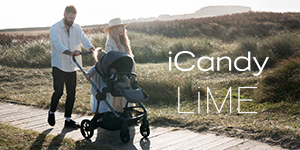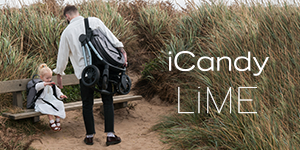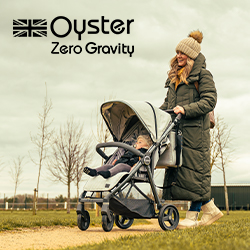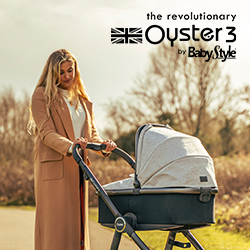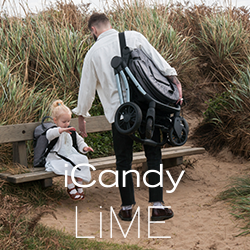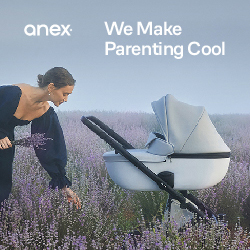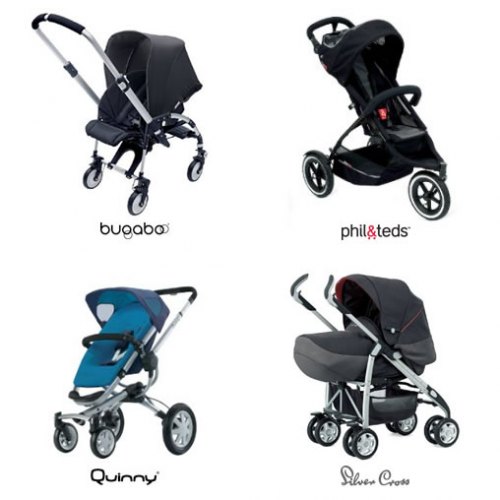Best Buggy’s Car Seat Safety Tips and Advice
A report published today in the Daily Mail, suggests that as many of 80% of child seats are incorrectly fitted.
Most issues are easily rectifed, however parents simply do not have the information they need to know about using car seats.
Best Buggy has produced this guide to highlight some of the main things to consider when buying and using a car seat for a child.
- Your child BY LAW MUST be carried in an appropriate child seat. Carrying a baby in your arms or on your lap is highly unsafe and is illegal! Allowing your child to sit on the rear seat unrestrained is also illegal. Using a pushchair, or pushchair seat strapped into the car is also not a suitable car seat for a child.
There are a few exceptions to car seat lawswhich include emergency journeys and taxi rides, and instances where there is no space for a child seat. Children with additional needs also MUST be in a suitable car seat unless exempt by a doctor.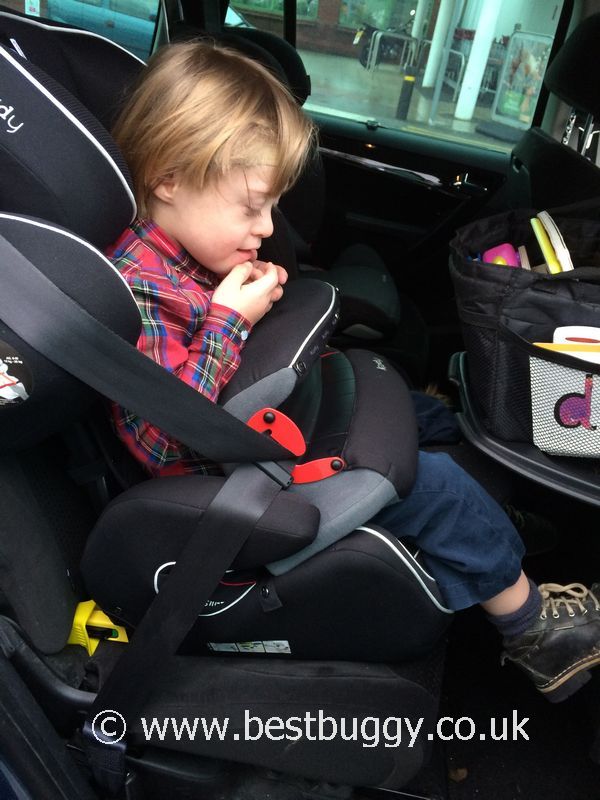
- Ensure you choose the correct car seat for your child’s weight, age or height.Car seat groups can be confusing, but the law is very clear :Rear facing baby seats – Babies up to 13kgs
Forward or rear facing baby seats – Children from 9kgs – 18kgs
Forward facing child car seats (booster seats ) – Children from 15-25kgs
All seats should be EU approved.i-Size is on the way.This will mean that ALL children will have to rear face until they reach 15 months old.In future Booster cushions i.e. backless boosters will only be able to be used by children weighing over 22kgs, however there is no date for this law change, and any seats bearing an R44/04 label will still be ok to be used by a child from 15kg.A child has to usually use a child car seat until they are 12 years old or 135cms tall. A child does not have an adult size body until they reach 150cms tall. The advice we have been given is that any child who is under 150cms tall, should continue to use a booster seat or cushion, even if they are too heavy for one, until they reach 150cms.
i-Size will also bring the requirement for side impact protection, which will effectively eliminate booster cushions. A number of leading manufacturers have already stopped making these.
PLEASE NOTE the difference between a booster cushion and a booster seat. The latter are also known as a high backed booster (as there is a back to the seat). Booster cushions are also sometimes called booster seats; however booster cushions have no seat back.
The driver of the vehicle is responsible for ensuring children travel in the correct seats and using the belt in the right way. There is a fixed penalty fine if the law is not met.
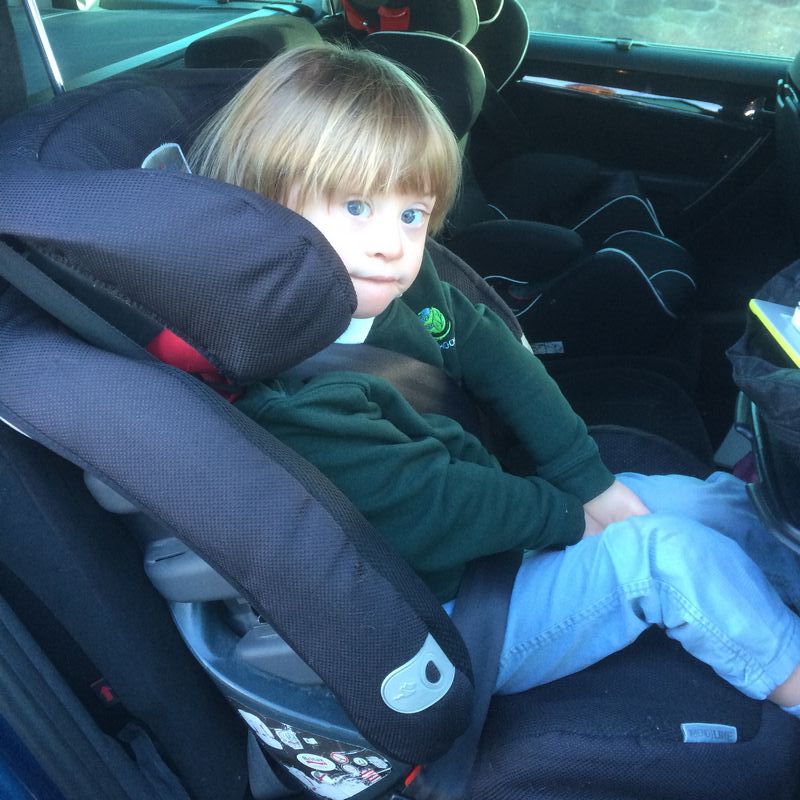
- Do NOT rush to move your child up into the next car seat before necessary. If your 2 year old is still under 13kgs and in their Group 0+ car seat, then this is absolutely fine as long as their head is not higher than the top of the infant carrier! The photo below shows Master BB aged 24 months in an infant carrier. Little legs WILL quickly hang over the end of an infant carrier, however children will learn to bend their legs. Broken legs are easier to repair than life threatening neck and spine injuries.
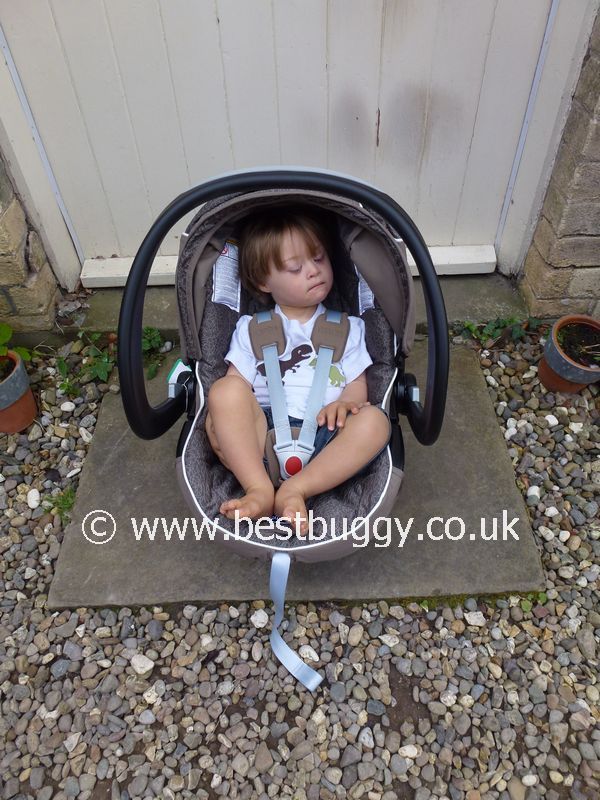
This Blog post by Cameron’s Mommy is a sobering read but is absolutely the reason why you MUST not move your little one into a Group 1 car seat before they are heavy enough, and that the harness should be properly fitted.A child is too big for a Group 1 car seat (5 point harnessed or impact shield seat) when they either exceed the maximum weight limit (usually 18kgs) or the upper edge of the car seat is at eye level with the child. Do not be in a hurry to move your child into a Group 2/3 car seat too early because the child’s shoulders need to be wide enough to hold an adult seat belt securely. A child who is too small may slide out in the event of an impact.This Blog post by Anniston’s Mummy is an equally sobering read. Anniston was sat on a booster cushion, using the adult seat belt, at the age of 3.Both Cameron and Anniston died as a result of horrific injuries from being sat on the wrong car seat for their age. - If you have more than one child seat in your car, ensure your child is sat in the one which is set up correctly for them. In this law case, the judge said that this child’s devastating injuries could have been prevented, if the child had been using the other car seat installed in the car, which would have been safer.
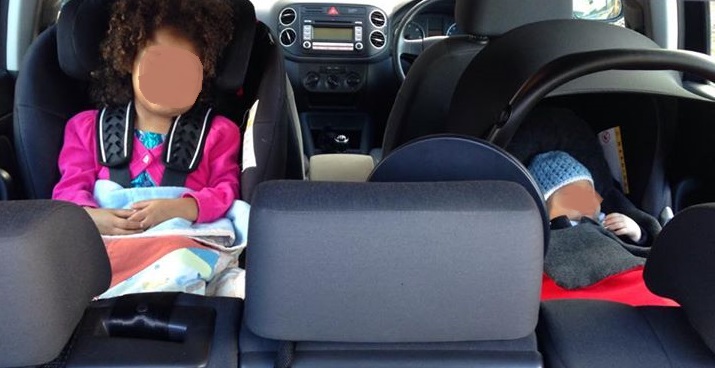
- Ensure that the child seat is fitted correctly. Not all car seats fit in all cars – check the manufacturers list of compatible cars before buying a seat. Be aware of potential issues with bucket seats, buckle crunch (where the buckle is leaning on the plastic shell of the seat, when done up), short seat belts, and underfloor compartments! Some seats require a support leg, others may require a tether strap. There should usually be an arms width space, between the seat back of a rearward facing car seat, and the front seat. However some seats require the seat or handle to rest on the front seat. Seek advice when choosing a car seat. Ask for a fitting demonstration from a qualified fitter.
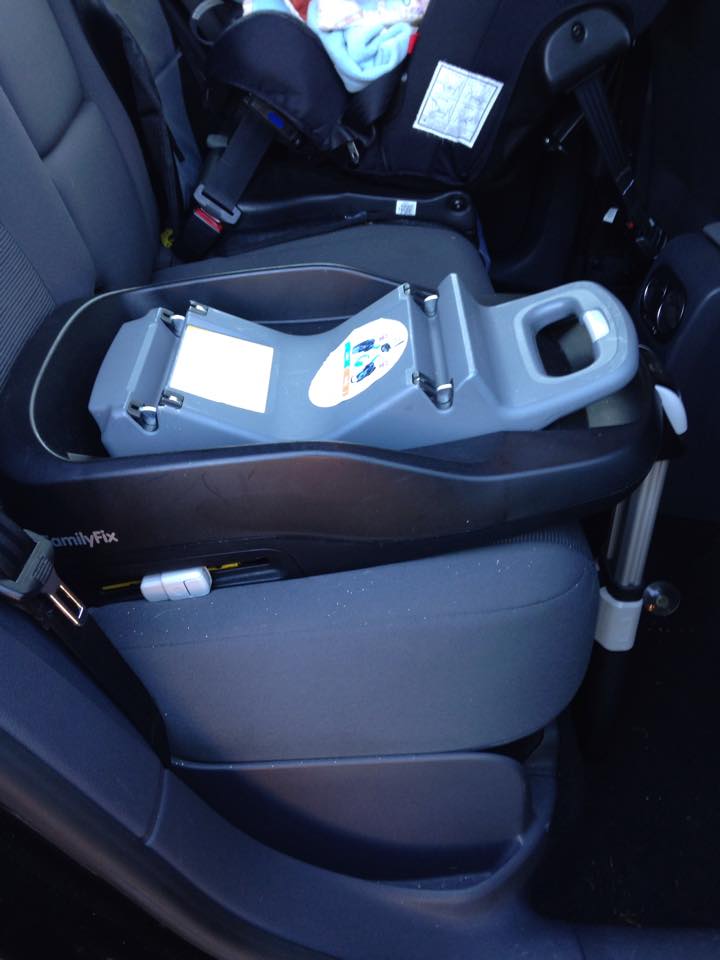
- Have you sat and read the instructions for your child seat? Have you routed the adult seat belt correctly? Is the isofix correctly clipped on? Have you learnt and practised how to adjust the seat safely?
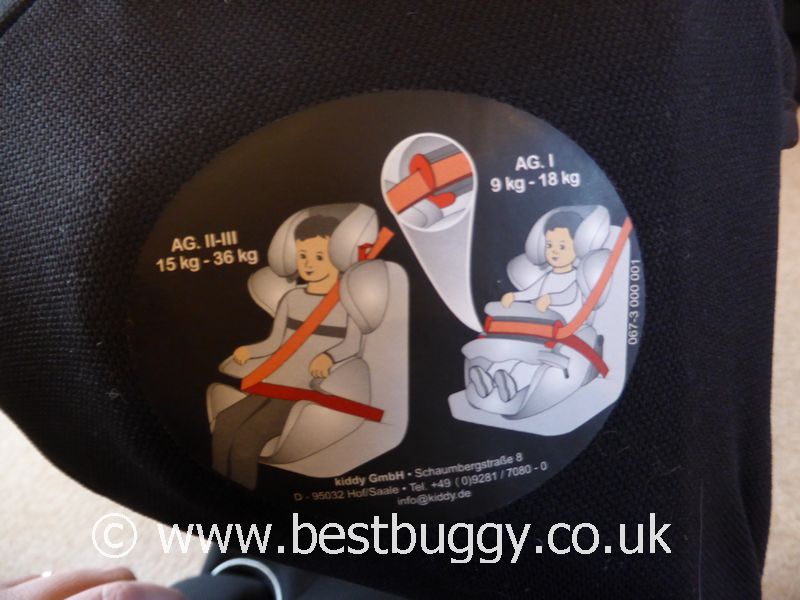
- Does the seat or base have visual indicators on it? Ensure that these are showing the correct colour (usually green) for a safe fit.
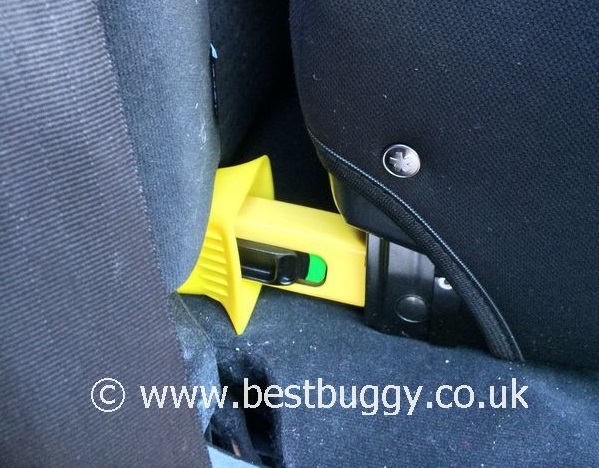
- Is the car headrest in the correct position? Ensure that the seat is not leaning on the adult headrest. If necessary, remove the headrest from the car. Never jam the seat under the headrest – a seat needs to move forwards in the event of an impact to provide good head and neck protection.
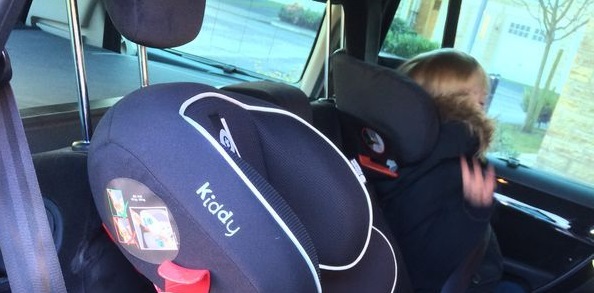
- Never put a child into a car seat with a thick winter coat or snow suit on. Try putting your child in their car seat, with their coat on and tighten the harness up. Then remove the coat and see exactly how much extra space there is between the harness and your child. A thick coat means that your child is being held in place by nothing but padding and air. In the event of an accident, the impact would squash the padding, so that the child would be forced through the harness and ejected from the seat.
We now keep blankets in the car to throw over the children in winter.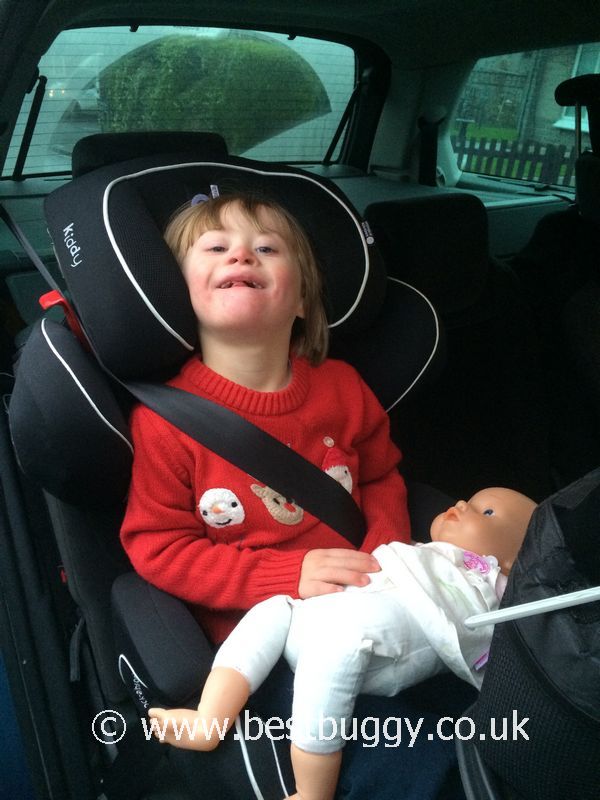
- ALWAYS do the harness or seat belt up tightly. Pull and pull again until can get the harness as tight as you can. Read here about the Pinch testwhere you ‘pinch’ the harness straps to see if there is any slack. If there is any slack when you ‘pinch’ the top of the harness, then it needs tightening up further. Any slack AT ALL and your child could be forced through the harness straps in the event of an impact.If I had a penny for every time someone told me that the harness straps were not tight so that their child was ‘comfortable’ then I would be a rich person. Forget being ‘comfortable’! A car seat is a safety device, which is designed to hold your baby firmly in place in the event of an accident. Would you go on a rollercoaster with your harness hanging loose off you? I think not! Do not do effectively do this to your precious new bundle either! Tighten the harness or seat belt up!
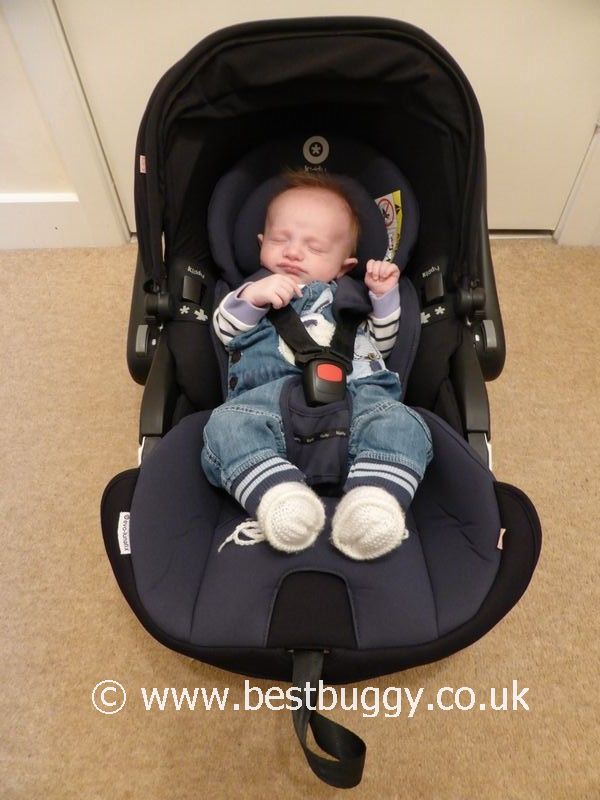
- Check the position of the handle on an infant carrier. Does it need to be up or down on your seat when fitted in the car? For many infant carriers, the handle forms a roll bar in the event of an accident. A small detail, but vital.
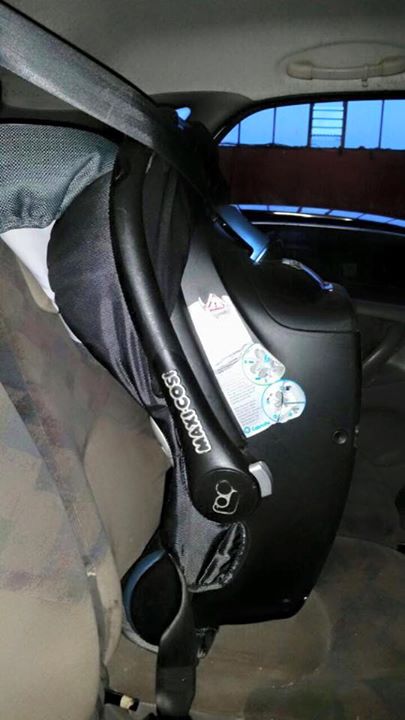
- Do not add any footmuffs or liners which have not been safety tested.Adding on anything which has not been safety tested, changes the integrity of the car seat. A car seat is safety tested in many different points on the seat shell and these are altered by adding a liner or footmuff. This usually means using the manufacturers car seat footmuffs and spare seat covers. We do know some infant seat footmuffs have been safety tested, but do read the labels carefully to see which car seats they are approved for use on. Most custom makers will refuse to make car seat footmuffs for this reason.
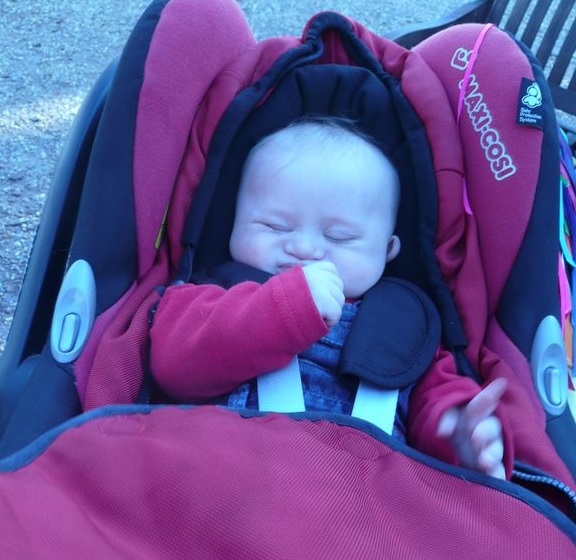
- Before every outing, check that your child is sat correctly in the car seat. As a journey progresses, muscles relax, and children need to be well seated, with their bottoms back in the seat, at the start of the journey to ensure they still fit well by the time you reach your destination.
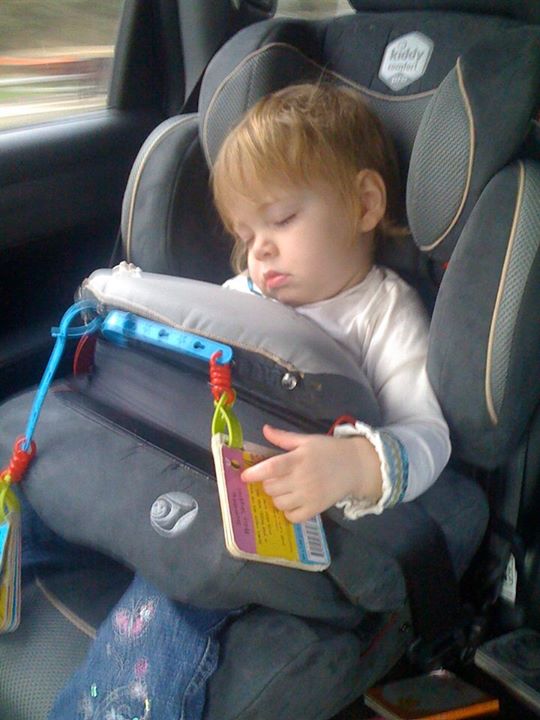
- Check for twisted harnesses and adult seat belts. We recommend that you completely undo the adult seat belt on a Group 2, 3 car seat every time before fitting it to the child.
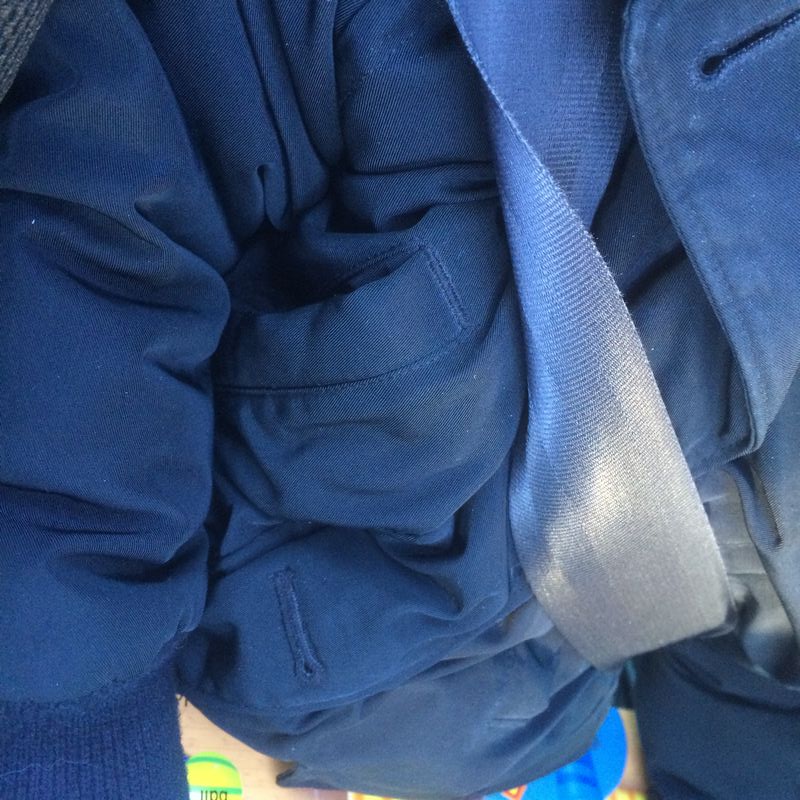
- Check the position of the harness on your child. Check, adjust and refit harnesses and seats as your child grows. Are the straps / belt placed correctly over their shoulder and hips? Are they too high or too low? The most common reason for a child escaping from a harness is because the shoulder height is not correct.
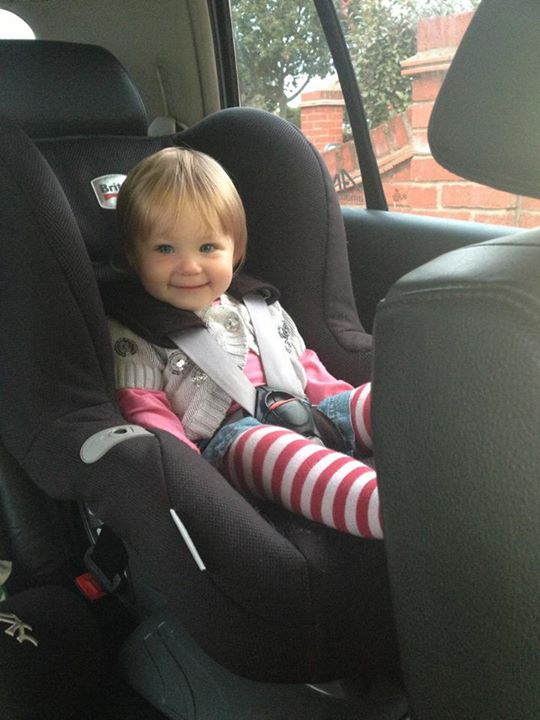
- Never allow a child to tuck their shoulder straps under their arms.The shoulder straps on both 5 point and adult seat belts, should be sat on the child’s shoulders. In the event of an impact, the child’s upper body would not be correctly restrained. The adult seat belt should not sit across the tummy of an older child.
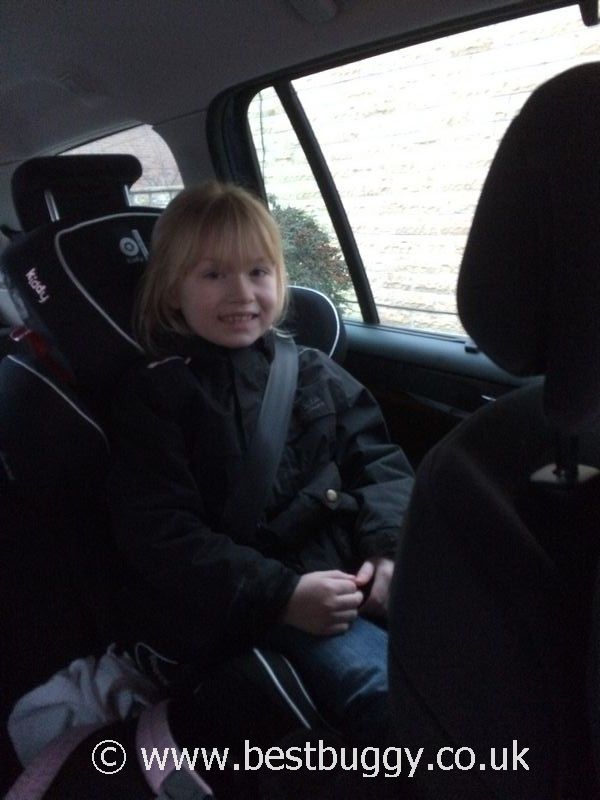
- The safest seat in a car is the one in the centre row of seats behind the driver and passenger. However if you have two car seats with a child on a booster in the middle seat, then please how safe the area around the head of the middle child would be in the event of an impact.
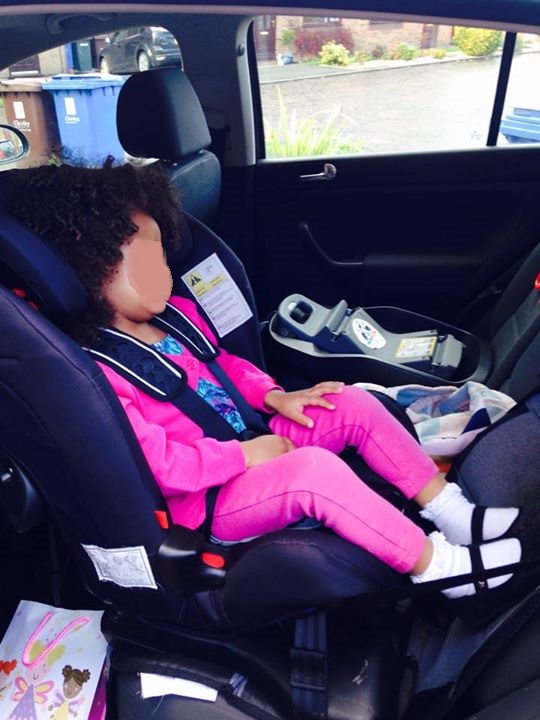
- A rear facing Group 0 / 0+ infant carrier must not be placed on the passenger seat, if there is an airbag switched on.
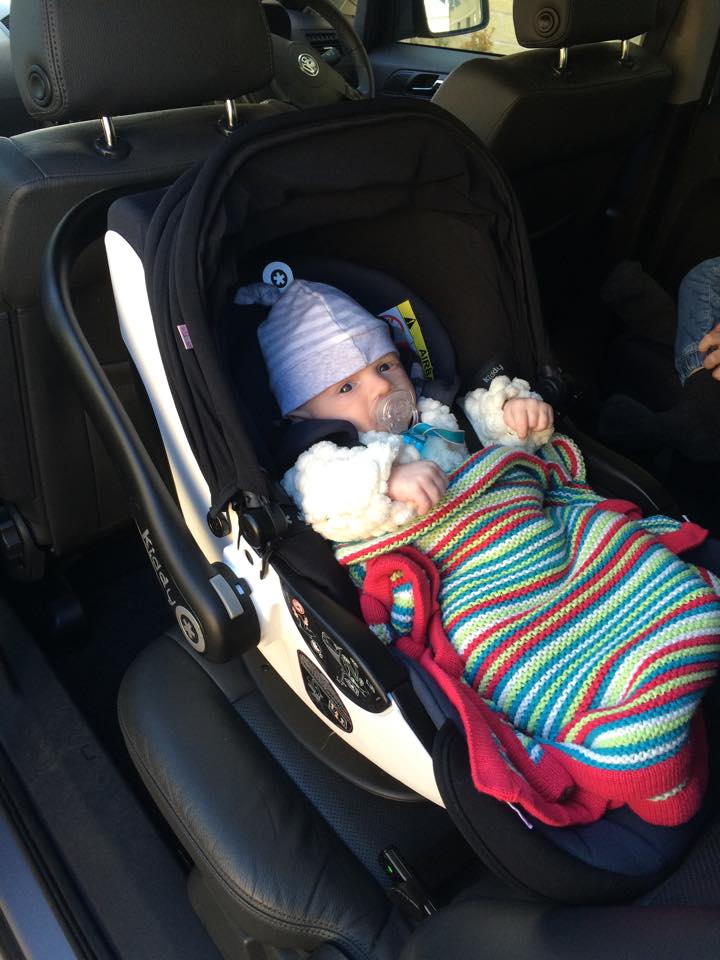
- A forward facing car seat is best positioned in the row of seats behind the driver and passenger. However, if the seat needs to be placed on the passenger seat, then ideally the air bag should be disabled and the seat pushed as far back as it will go.
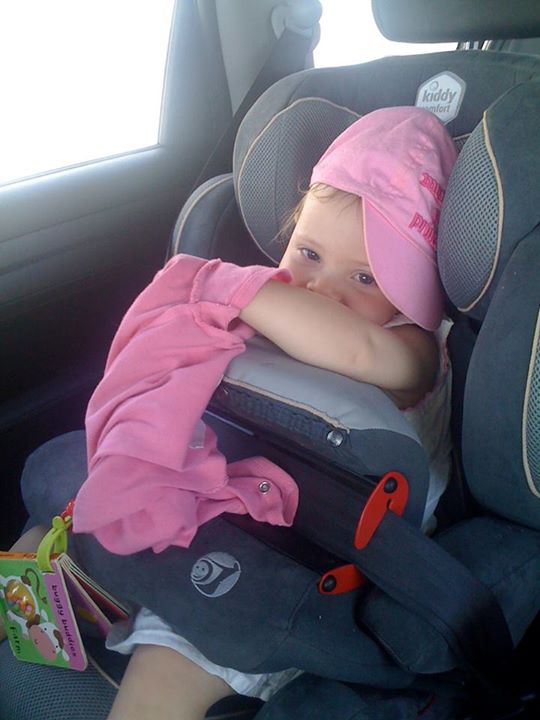
- Escaping Toddlers? Never add on a chest clip to a car seat in the UK like a Houdini Stop. First check the shoulder harness height and position. Checking this can resolve a good number of escapees. Chest clips are illegal in the UK on a Group 1 five point harness car seat, and can cause severe internal injuries. If you want more graphic detail have a look on the Five Point Plus website here. The Five Point Plus system is endorsed by Maxi Cosi and Bébé Confort as a safe option to prevent toddlers escaping. Cosatto have incorporated this system into some of their Group 1 car seats.
There is provision under i-Size for a chest clip to be added to a Group 1 car seat, however at time of writing we do not know of any i-Size Group 1 seats with a chest clip.
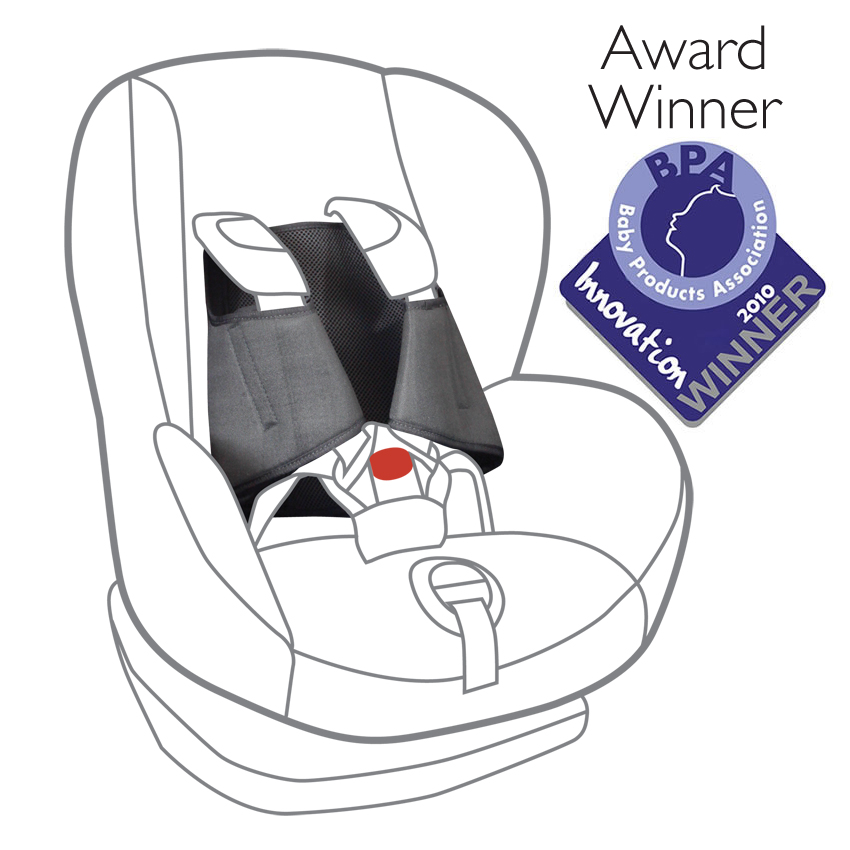
- Replace the seat cover and harness properly after washing.
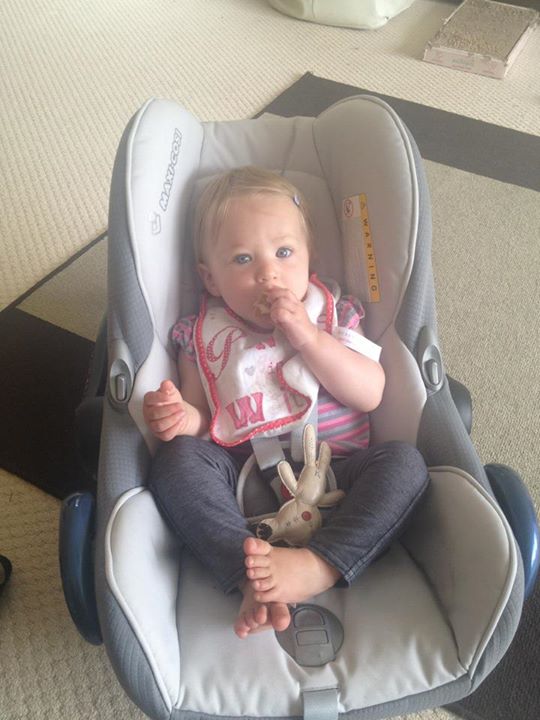
- Check your car seat regularly for recalls, faults and broken parts.A report done by the Child Seat Safety Company in 2013 found that 21% of all child restraints checked, were condemed or recalled.
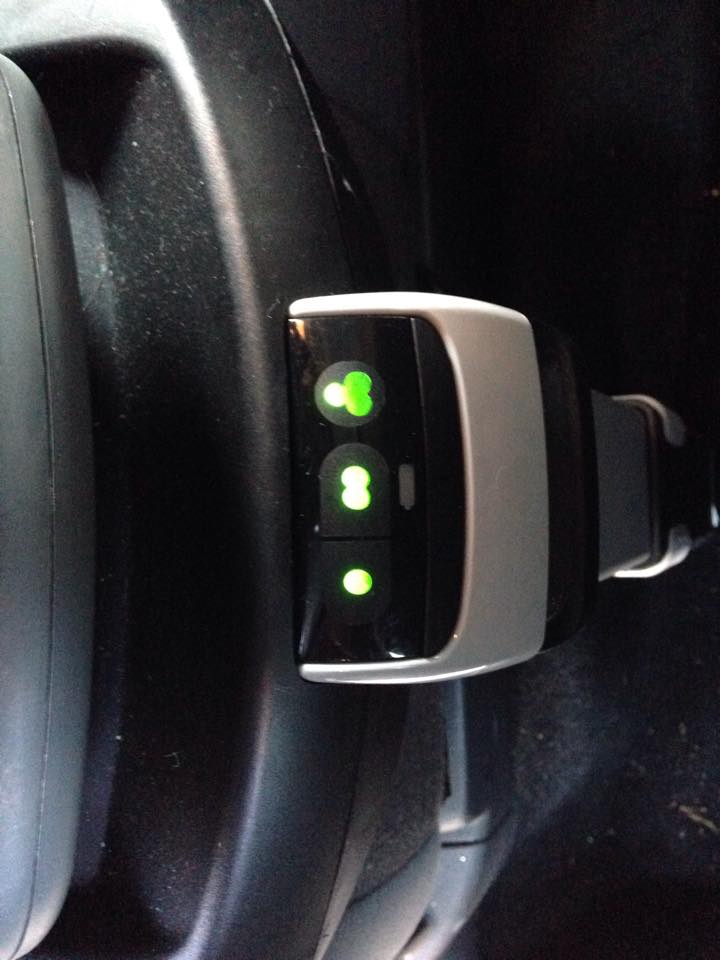
- Secure the child seat if the child is not in it! The driver does not need an empty car seat striking them on the back of the head in the event of an impact! This is where having an Isofix seat is a benefit.
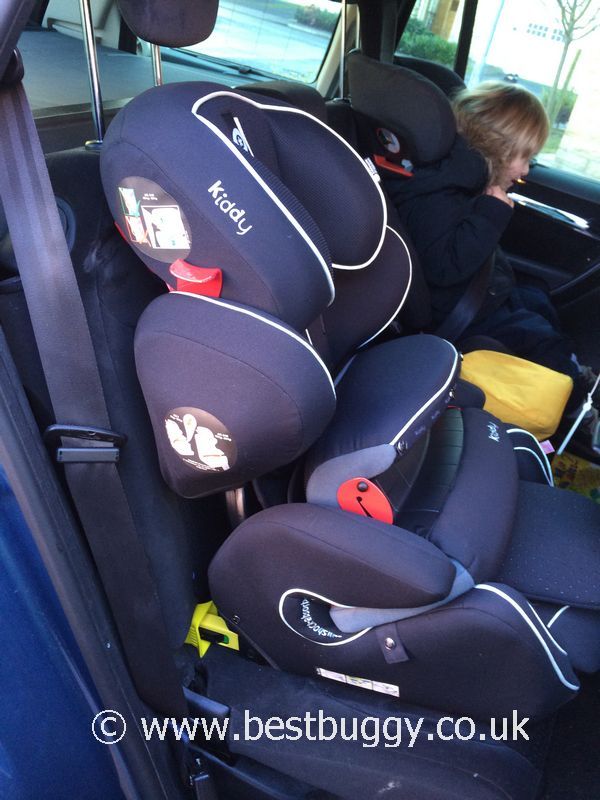 A car seat needs replacing if it has been in an accident. For this reason, buying a car seat second hand is not advised. You have no idea where it has been! Some manufacturers like Kiddy and Maxi Cosi will replace their car seats free of charge if you are involved in an accident.
A car seat needs replacing if it has been in an accident. For this reason, buying a car seat second hand is not advised. You have no idea where it has been! Some manufacturers like Kiddy and Maxi Cosi will replace their car seats free of charge if you are involved in an accident.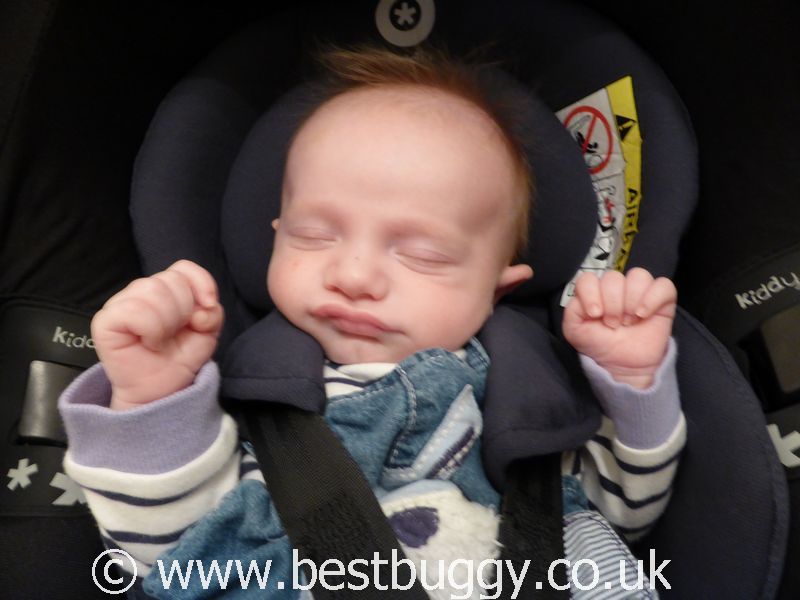
- Did you know that infant carriers have an expiry date?This is due to degradation of the plastics and moving parts across time. The ‘clocks’ printed into the infant carrier will give the date the seat was manufactured.
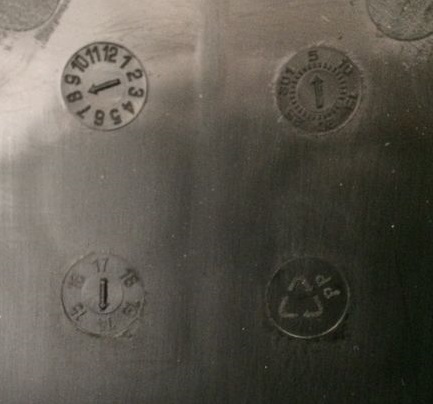
A Group 1, 2 , 3 booster seat usually does not have an expiry date, however the expectation is that it will last for the lifetime of one child, and then should be disposed of. Note the recycling symbol above means some parts can be recycled.
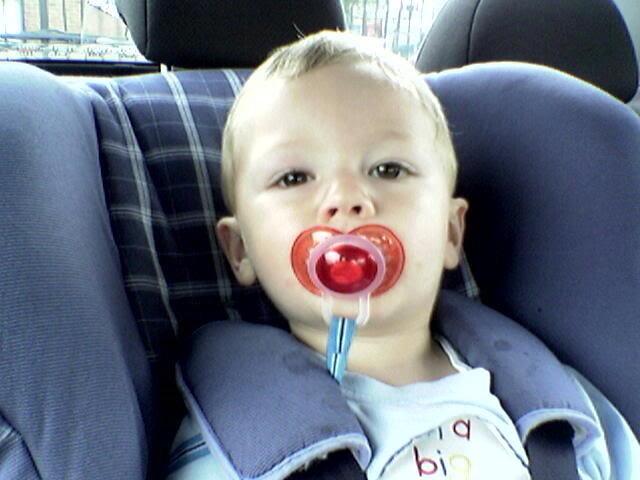
- Difficult as it is, PLEASE take a minute to tell a friend if their child is in the incorrect car seat or it is incorrectly fitted. We know that Cameron’s Mommy, and we suspect Anniston’s Mummy, both wish a friend had taken the time to tell them that their child was in the wrong car seat. It is hard to tell someone…..believe me, we know it is hard. But this could be a child’s life at risk.
Which? have an excellent check list here which can be printed off and kept in your car as a quick reminder each time you travel.
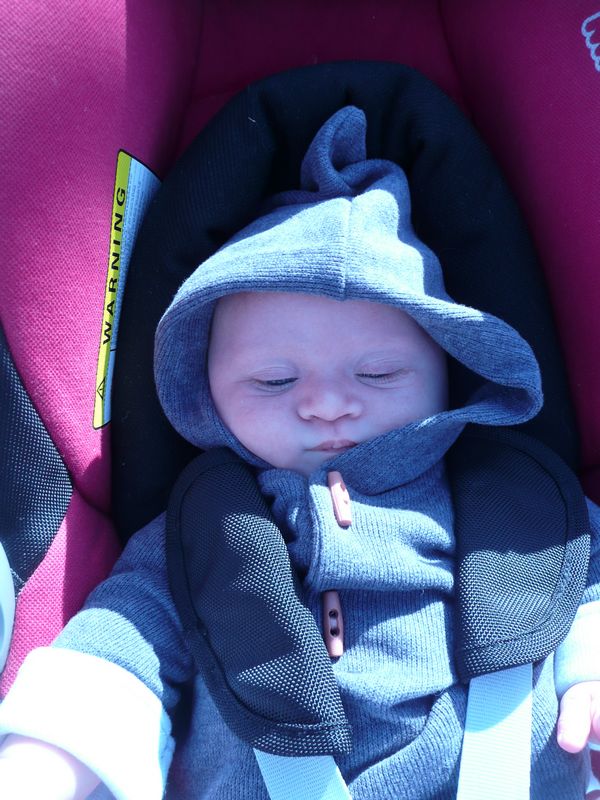
- Kiddy Cruiserfix 3 Review by Best Buggy
- Recaro Zero. 1 Elite Car Seat
- Jané Matrix Light Review
- Child Car Seats - Real Life v's Theory.
- Cozy 'n' Safe Excalibur v's Apramo One v's Diono Radian 5
- Maxi-Cosi Rodifix Air Review by Best Buggy
- Mifold - the Grab-and-Go Booster Cushion
- Finding the Right Car Seat for a Child with Additional Needs
- Juniair Go Booster Inflatable Child Car Seat
- BeSafe iZi Modular & Visit to TRL Child Safety Centre
- Mifold Booster Cushion Car Seat
- CasualPlay Q-Retraktor Review by Best Buggy
- Cosatto Zoomi Review by Best Buggy
- Cosatto Hootle Review by Best Buggy
- Cosatto Hug Review by Best Buggy
- Kiddy Evo-lunafix Review by Best Buggy
- The Introduction of the 2015 i-Size Car Seat Regulation
- Maxi Cosi Axiss Fit Review - Submitted to Best Buggy
- Best Buggy's Car Seat Safety Tips and Advice
- Why Babies Should Travel Laid Flat In A Car Seat Infant Carrier.
- Simple Parenting Doona Car Seat Stroller Review by Best Buggy
